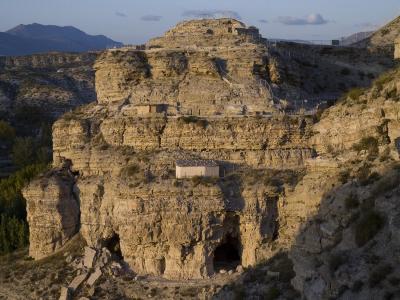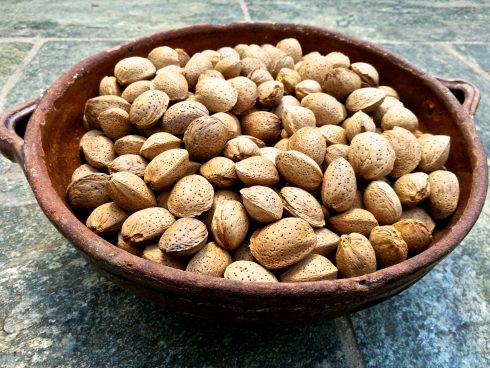Words by Nick Nutter
YOU need to go back to about 2000 years before the birth of Christ. To be exact, some time between 2200 BC and 1550 BC, that the Argaric people roamed the south of Spain.
Covering southeast of the Iberian peninsula, from Granada to Alicante and from Almeria to Ciudad Real, these ancient Bronze Age folk were way before their time.
Indeed, thousands of years before the Romans they developed an expertise in using bronze, particularly for weaponry, as well as creating sophisticated pottery and ceramic techniques.
They also mined and worked silver and gold and, above all, developed a more sophisticated society than anything that had come before.
For starters, the old fashioned communal tombs were abandoned in favour of individual burials in ‘cysts’, often beneath each family’s own dwelling.
There also appeared to be three levels of society. The upper and middle classes had access to metal and weapons and the lower class were basically slaves.
The refinement of their work in metals and pottery allowed these people to extend a trading network established by their predecessors, the people of Los Millares.
These people are known today as the ‘Argaric people’ and their culture is called the Argar culture.
It was about 1900 BC that the Argaric people built a fortified settlement near the village of Galera (pop: 1,130) in Granada’s little-visited and populated Altiplano region.
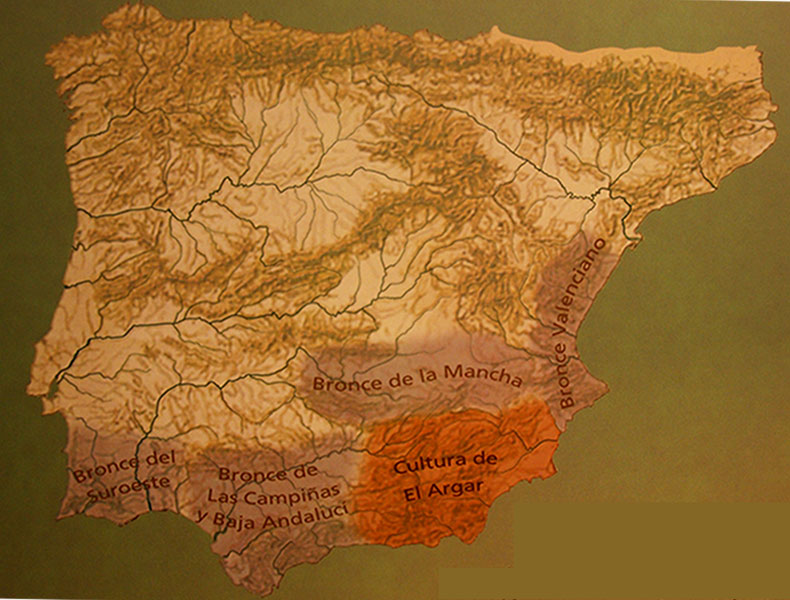
On a craggy spur on the banks of the river Castillejar, the place became known as Castellón Alto, and it is an amazing place for both history-lovers and anyone with a joy of getting out into nature.
The site covers about half a hectare and overlooks a fertile plain known as the Baza–Huescar plateau, the two key towns of the surrounding area.
It is one of four Argaric sites in the valley, each separated from the other by three kilometres.
At its peak, Castellón Alto is believed to have housed about 80 inhabitants and it grew until around 1600 BC, when it was suddenly abandoned.
Built on a spur of the river, terraces were cut out of the rock to provide a flat surface on which the houses were built.
Each house had a low stone foundation sat on the bedrock and then posts, made of pine, supported the walls and roof. The posts were set in the bedrock and held firmly in place with wooden wedges. Two further posts acted as door jambs, while the door itself comprised of an esparto grass mat, similar to the ones still woven in Andalucia today.
The walls were cane or interwoven branches of tamarisk, broom, poplar, willow or rushes, bound together with mud or gypsum plaster.
The flat roof was a frame of pine supporting interwoven material thickly impregnated with mud that then baked in the sun.
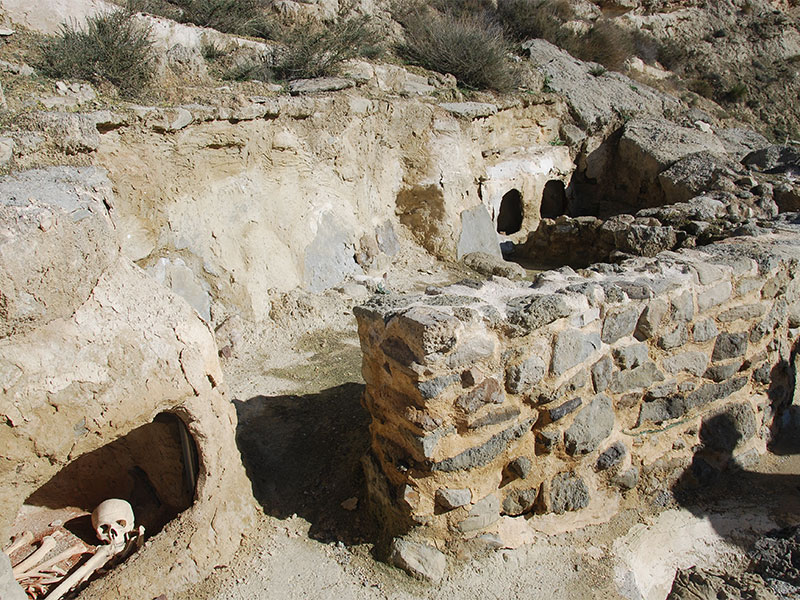
But most interestingly was each inhabitant’s position in the social structure, which was determined by which terrace they lived on.
The construction of the settlement, around a buttress of rock, made defence easy, the whole structure resembles a fortress.
Crowning the settlement is an area called the Acropolis and it was up here, in this walled area, that the community leaders had their homes.
A total of nine graves, all cyst type burials beneath the dwellings, have been found within the Acropolis, compared to a total of 130 tombs on the whole site.
One of the Acropolis tombs contained a bowl, a jar, a halberd (a two-handed pole weapon) and, even, a short copper sword, all indicating the high position held by the deceased.
Unfortunately, the other tombs on the Acropolis have been affected by erosion and clandestine digging.
The Acropolis had its own cistern that would have been kept topped up by the serfs, who had to bring their own water as well up from the river far down below.
As with modern towns, the settlement was not full built to start with, rather it developed over the whole period of occupation. The various phases of construction are well explained at Castellón Alto.
It is a great place to visit today and the majority of the site is well preserved and a huge amount of information has been gleaned about the Argar people and their culture.
Anthropological study has shown that the people were typical Mediterranean types, of average height and slim build.
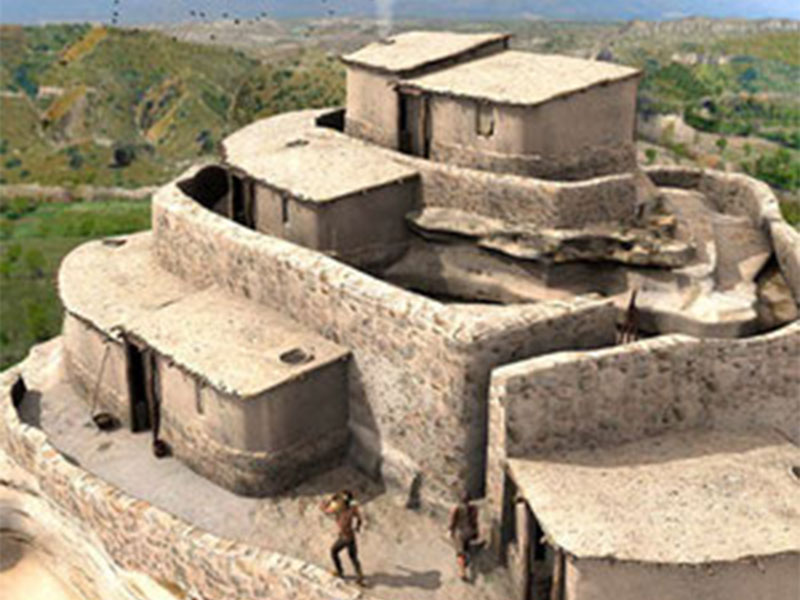
The average height of a man was 1.67 metres and that of a woman 1.57 metres. A new-born child could expect to live about 23 years with only 3.5% surviving to the age of 60 years.
The diet was primarily vegetarian with a little meat. Not unexpectedly the upper echelons of society tended to live longer and eat more meat.
Nick Nutter owns travel website Visit Andalucia (www.visit-andalucia.com)
Why Castellon Alto was abandoned
Beneath the settlement, extending down the valley sides to the irrigated land along the river, was a thick growth of holm-oak and Aleppo pine.
The Argaric people of Castellón Alto denuded the valley sides of trees that they used for fuel and building.
It is likely that this is the reason for it being abandoned after only 300 years.
Tours of Castellon Alto
Tours of the site are conducted at set times and days throughout the year. Please check with the official website for opening times. The numerous informational plaques around the site are, unfortunately, only in Spanish, which is a pity because they display masses of information. The guide also only speaks Spanish. However, if when you book the tour, you ask for information in English, you will be presented with a plastic folder containing 16 sheets of A4 paper, each one a translation of the information on the plaques.
For more information visit: https://www.juntadeandalucia.es/cultura/enclaves/enclave-arqueologico-castellon-alto
Click here to read more Travel News from The Olive Press.

